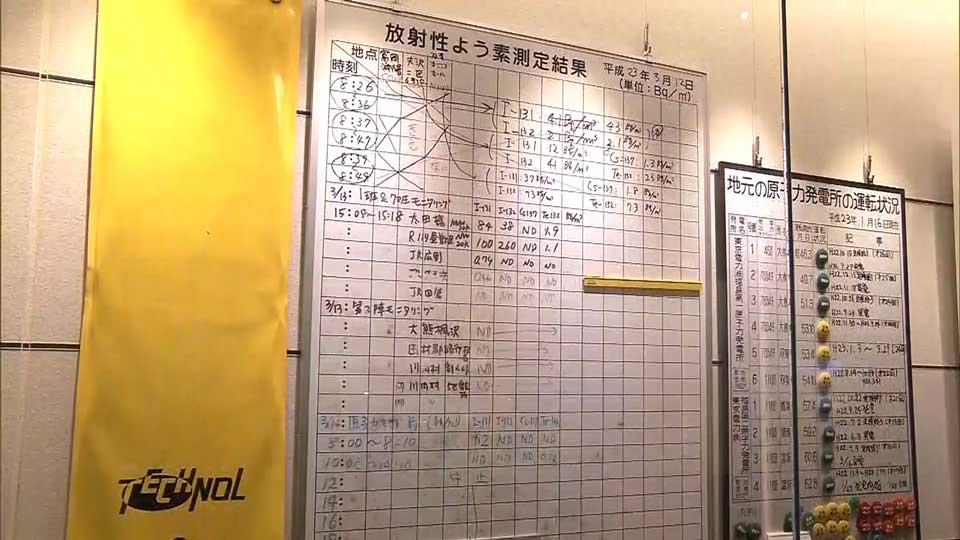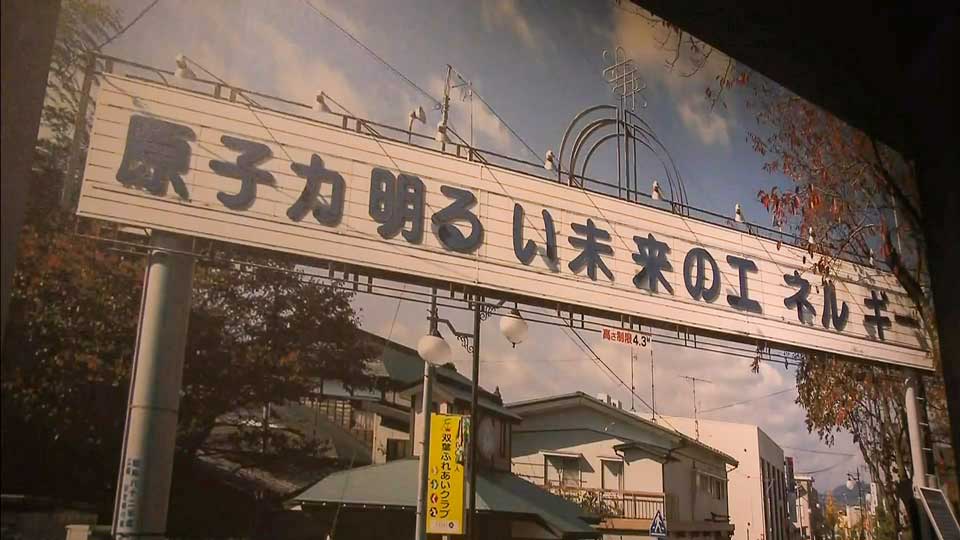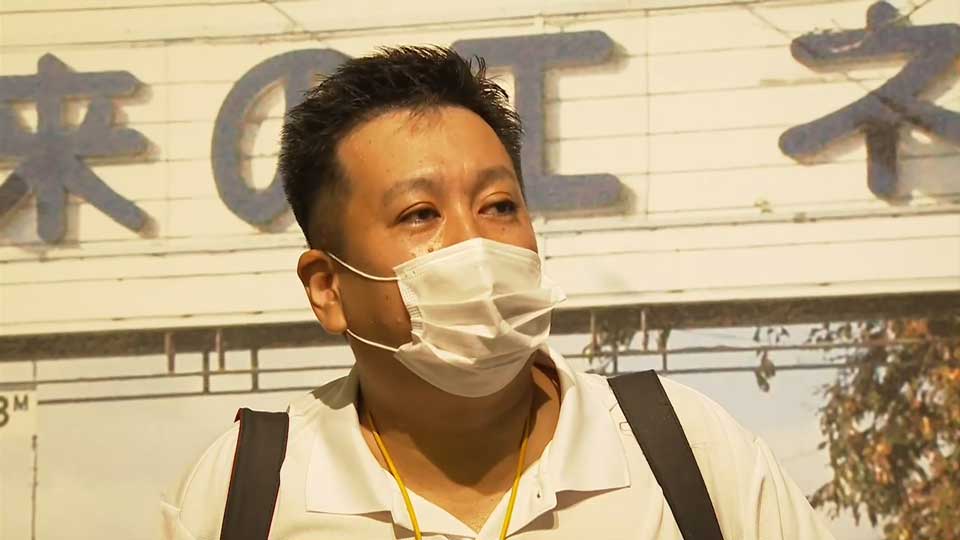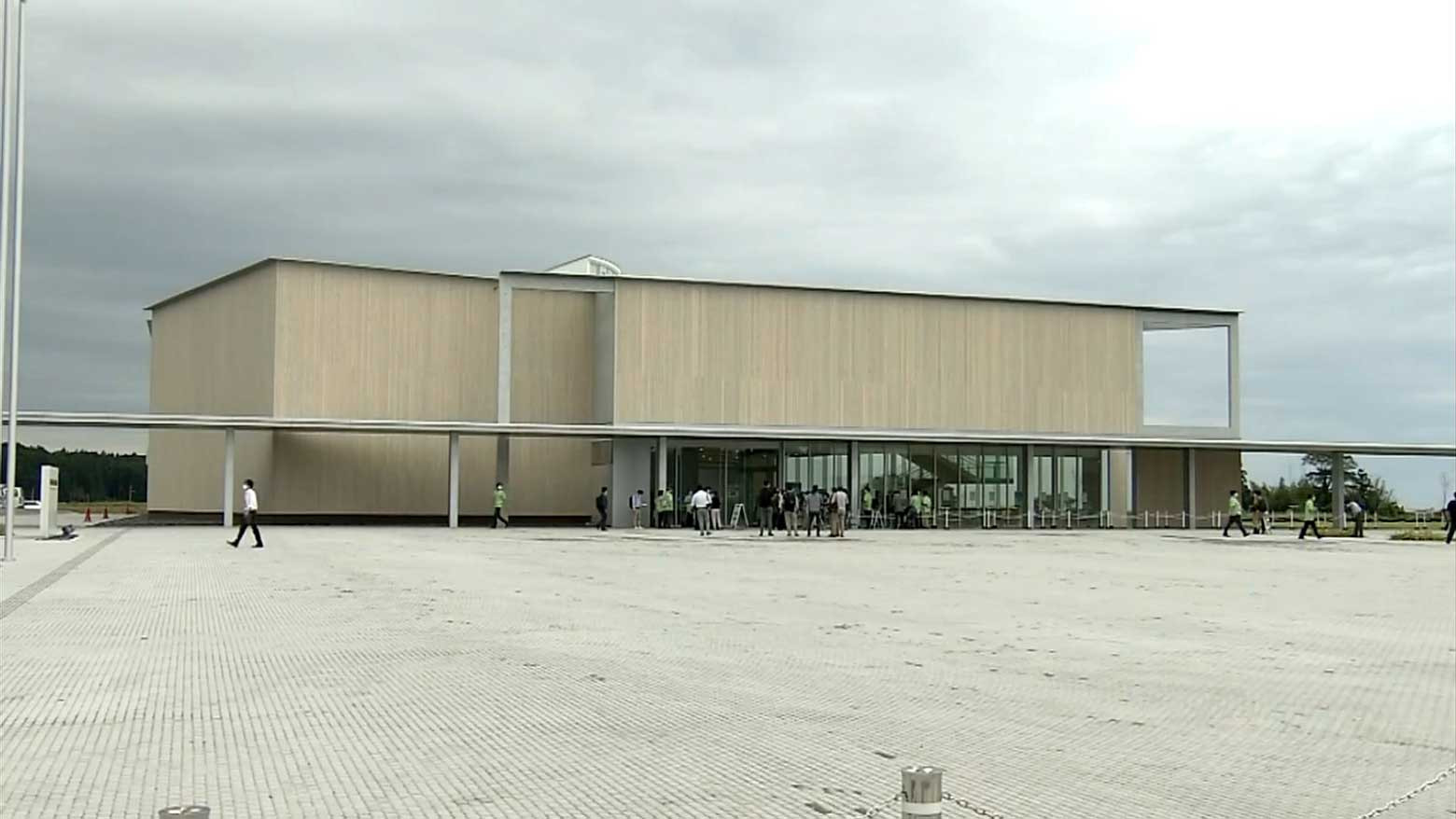The museum is located just four kilometers from the Fukushima Daiichi nuclear plant, which is still being decommissioned. Authorities have partially lifted an evacuation advisory for the town, Futaba, but no-one lives there.
The museum has six sections. Visitors are welcomed by seven large film projections on walls and the floor. One video shows daily life before the accident. Others show the earthquake and tsunami, the onset of the nuclear emergency and residents’ evacuation, reconstruction efforts, and the plant decommissioning. Former Futaba residents are on hand to give first-hand accounts of their experiences.
Some of the exhibits come from what was known as the “off-site center,” a base for officials responding to the accident, and they vividly illustrate how the situation worsened. Numbers scribbled on a whiteboard give the readings of radioactive iodine. Faxed documents addressed to the central and local governments share the news that the plant had lost all power.
One of the museum’s early visitors was a 71-year-old man who evacuated from Futaba. He said he still felt a chill when he remembered what it was like to hear explosions at the plant. The man believes the museum has an important role to play to help people understand what happened.

A large photograph in the museum shows a sign that was once proudly displayed in the center of town. It reads “Nuclear Power is Energy for a Bright Future.” The 16-meter-wide board was a symbol of local efforts to promote nuclear power. It was installed in 1988 and removed in 2016, five years after the accident.

Onuma Yuji, 44, wants the sign itself to be put on display. He says it’s an important part of Futaba’s history. It was Onuma who came up with the slogan back in 1987 when he was a sixth grader. It won a town commendation and was put up for all to see.
Onuma says before the accident, Futaba residents genuinely believed that nuclear energy represented a bright future. While some people may feel that the sign is a negative legacy, Onuma says it needs to be displayed. “I believe the sign will urge visitors to think about nuclear power plants, including the lessons learned from Fukushima Daiichi.”

Although the sign is stored at the museum, officials decided against putting it on display, citing its size and weight. The Fukushima prefectural government, which runs the facility, has collected about 240,000 items related to the earthquake, tsunami and nuclear disaster. Only a fraction of them can be shown at one time.

